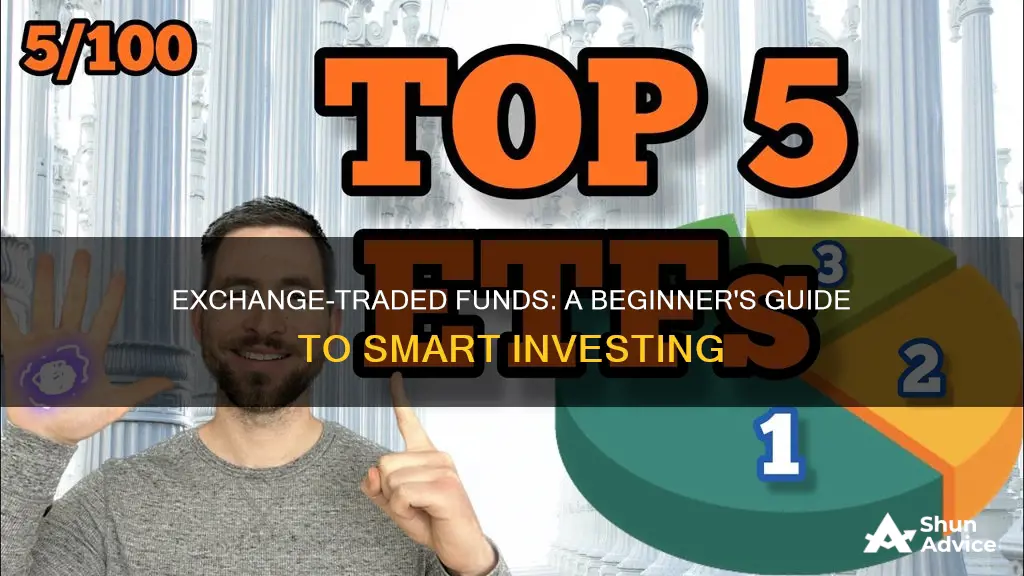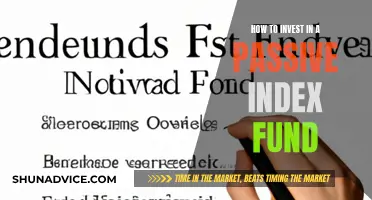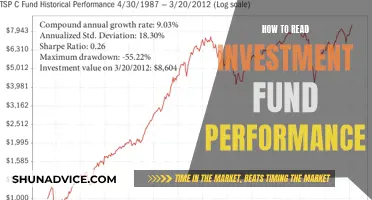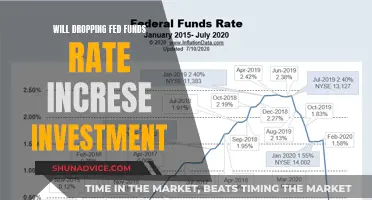
Exchange-traded funds (ETFs) are ideal for beginners looking to invest their money. ETFs are similar to mutual funds in that they hold a collection of stocks and bonds in a single fund, but they are bought and sold on stock exchanges. ETFs can be traded anytime the exchange is open, and you can start investing in ETFs even if you only have a small amount of money to invest. They are also simple to understand and can generate impressive returns without much expense or effort. ETFs can be a great way to get exposure to a variety of stocks, bonds, and other assets, typically at a low cost. They are also more liquid and easier to buy and sell than mutual funds.
Before investing in ETFs, it is recommended to practice using a simulated trading application to better understand the investment process. You can use a practice account to experiment with different ETFs and allocate a certain percentage or weight to each ETF in your portfolio. When you are ready to start investing with real money, you can open a brokerage account with an online broker such as TD Ameritrade, eToro, Charles Schwab, E*Trade, Fidelity, or Interactive Brokers. These brokers offer commission-free trading and fractional share investing, so you can buy ETFs even if you only have a small amount of money to invest.
When selecting ETFs to invest in, it is important to consider the fund's expense ratio, which is the fee charged by the ETF for managing the fund. Lower expense ratios are generally preferable as they result in lower costs for investors. It is also important to understand the risks involved with investing in ETFs, as there is always the potential for losses. However, ETFs can be a safer option than investing in individual stocks due to their inherent diversification.
| Characteristics | Values | |
|---|---|---|
| Definition | Exchange-traded funds (ETFs) are a type of investment fund that offers the best attributes of two popular assets: They have the diversification benefits of mutual funds while mimicking the ease with which stocks are traded. | Exchange-traded funds (ETFs) |
| Benefits | ETFs are ideal for beginning investors due to their many benefits, which include low expense ratios, instant diversification, and a multitude of investment choices. | Low expense ratios, instant diversification, and a multitude of investment choices |
| Comparison with stocks | ETFs are relatively inexpensive, available through robo-advisors as well as traditional brokerages, and tend to be less risky than investing individual stocks. | Relatively inexpensive, available through robo-advisors and traditional brokerages, less risky than individual stocks |
| Comparison with mutual funds | ETFs have lower fees and better tax efficiency than mutual funds. | Lower fees, better tax efficiency |
| How to invest | Beginners can start by setting up a practice portfolio, deciding on the desired level of diversification, choosing a brokerage account, and investing small amounts regularly. | Set up a practice portfolio, decide on diversification, choose a brokerage account, invest small amounts regularly |
What You'll Learn

Dollar-cost averaging
How Dollar-Cost Averaging Works
With a 401(k) plan, employees can choose the amount they wish to contribute as well as those investments offered by the plan in which to invest. Then, investments are made automatically every pay period. Depending on the markets, employees might see a larger or smaller number of securities added to their accounts.
Benefits of Dollar-Cost Averaging
- It can lower the average amount spent on investments.
- It reinforces the practice of investing regularly to build wealth over time.
- It's automatic and can take concerns about when to invest out of your hands.
- It removes the pitfalls of market timing, such as buying only when prices have already risen.
- It can ensure that you're already in the market and ready to buy when events send prices higher.
- It takes emotion out of your investing and prevents you from potentially damaging your portfolio's returns.
Who Should Use Dollar-Cost Averaging?
The investment strategy of dollar-cost averaging can be used by any investor who wants to take advantage of its benefits, which include a potentially lower average cost, automatic investing over regular intervals of time, and a method that relieves them of the stress of having to make purchase decisions under pressure when the market is volatile.
However, dollar-cost averaging isn't for everyone. It might not be appropriate for those investing in time periods when prices are trending steadily in one direction or the other. Be sure to consider your outlook for an investment, plus the broader market when making the decision to use dollar-cost averaging.
Bear in mind that the repeated investing called for by dollar-cost averaging may result in higher transaction costs compared to investing a lump sum of money once.
Passive Mutual Funds: A Guide to Getting Started
You may want to see also

Swing trades
Swing trading is a short-term investment strategy that aims to profit from price swings in an asset. It involves capturing a part of an expected price move over a few days or several weeks, rather than larger gains over longer periods.
Swing traders often look for opportunities among widely traded large-cap stocks or exchange-traded funds (ETFs) that show a tendency to swing within broad, well-defined channels. They may also maintain a list of stocks and ETFs to monitor daily to familiarise themselves with price movement trends.
Swing trading strategies primarily employ the use of technical analysis, which attempts to predict future price movements from an investment security's historical activity. Examples of swing trading strategies include:
- Change in price direction: After the market has confirmed a change of direction in price, the swing trader may buy on expected positive momentum.
- Trade on weakness, sell on strength: If an investment is trading on the lower end of its trading channel, the swing trader may buy on the perceived weakness.
- Technical patterns: Swing traders experienced in technical analysis may use specific multi-day chart patterns for cues to enter and exit positions.
Swing traders may also use tools such as moving averages, momentum indicators, candlestick charts, and market sentiment indicators.
As ETFs are ideal for beginners due to their low expense ratios, instant diversification, and multitude of investment choices, they are perfect for novice swing traders. However, like trading crypto or forex, swing trading ETFs has its risks.
When selecting an ETF for swing trading, it is important to consider the fund's volume and liquidity. ETFs with high volume and liquidity enable swing traders to open and close trades with ease. It is also worth noting that some sectors offer more liquidity than others. For example, technology-based ETFs tend to have higher liquidity than material-based ETFs.
To identify suitable ETFs for swing trading, traders rely on technical analysis tools to forecast powerful price movements in the coming days or weeks. While these indicators are not 100% accurate, they provide critical insights. ETF swing traders use technical indicators like chart patterns, which provide a visual representation of an ETF's prices, to identify potentially profitable ETFs.
Some commonly used ETF swing trading strategies include:
- The 50-Day Moving Average: This strategy involves checking the price average of an ETF over the past 50 days, often serving as the ETF's resistance level in technical scrutiny. Swing traders use this strategy to spot trends, including bearish or bullish crossovers.
- Sector Analysis: This strategy involves researching top stock sectors and identifying potential sectors that may start trending. Swing traders can then narrow down their options and identify the ETFs that encompass these sectors.
In conclusion, swing trading can be a profitable and accessible way for a beginner to get into trading. However, compared to standard stock or ETF investing, the relative complexity involved with a swing trading strategy is not well-suited for amateur investors.
Sygnia OSI Fund: A Smart Investment Strategy
You may want to see also

Sector rotation
The U.S. stock market is divided into 11 sectors, and sector ETFs provide a way to invest in specific companies within these sectors. Some examples of sectors include health care, financial, and industrial.
- Economic-Cycle Strategy: This strategy assumes that the economy follows a well-defined economic cycle, such as the business cycle defined by the National Bureau of Economic Research (NBER). Investors buy into sectors that are expected to perform well at different stages of the economic cycle and sell when they reach their peak. However, this strategy can be challenging as the economy may not always follow the defined cycle, and misjudging the cycle can lead to losses.
- Calendar Strategy: This strategy focuses on sectors that tend to perform well during specific times of the year. For example, retailers often experience increased sales during the back-to-school season and the Christmas holiday. ETFs that focus on these retailers may perform well during these periods.
- Geographic Strategy: This strategy involves selecting ETFs that take advantage of potential gains in specific countries or regions. For instance, a country's economy may be growing faster than others, or a region may be benefiting from increased demand for their products.
Using ETFs for Sector Rotation
ETFs are well-suited for sector rotation strategies as they provide instant diversification and are traded easily throughout the day. When using ETFs for sector rotation, it is crucial to understand the investing strategy and portfolio composition of each ETF before committing capital. Additionally, lightly traded ETFs may pose higher risks due to lower liquidity.
The Sector Rotation Model (SRM) is an example of a strategy that uses ETFs to focus on the best-performing sectors. It utilizes 11 Sector SPDR ETFs and adapts to changing market conditions, resulting in higher returns and lower risk. During severe market declines, the SRM moves to cash or bonds to avoid major losses.
In conclusion, sector rotation strategies, when implemented effectively, can generate positive returns even during market downturns. ETFs are a useful tool for sector rotation, providing investors with a way to enhance the performance and diversification of their portfolios.
A Smart Guide to Socially Responsible Index Fund Investing
You may want to see also

Short selling
When it comes to Exchange-Traded Funds (ETFs), short selling allows investors to profit from a potential decrease in the ETF's value. ETFs are investment funds that trade on stock exchanges, offering diversification and liquidity by pooling investor money for exposure to various assets. Short selling ETFs can be a way to hedge against market downturns or capitalise on perceived market trends.
Here's a step-by-step process for short selling ETFs:
- Open a Margin Account: Short selling usually requires a margin account, which allows you to borrow securities. You may need to apply for margin privileges even if you already have a brokerage account.
- Check Borrowing Availability: Verify with your broker that the specific ETF you want to short is available for borrowing. Some ETFs may not be suitable for short selling due to liquidity constraints.
- Place a Short Sell Order: Once availability is confirmed, place a short sell order through your brokerage platform. Specify the quantity of shares and choose the order type (limit or market order).
- Monitor the Trade: Keep a close eye on the market and the ETF's performance. Use stop-loss orders to manage potential losses, and ensure your account meets margin requirements.
- Buy to Cover: When closing your short position, you'll need to "buy to cover" by purchasing the same number of shares you initially borrowed and sold.
- Account for Dividends: If the ETF pays dividends, you may need to compensate the lender for dividend payments made during your short position.
It's important to understand the downsides of short selling ETFs:
- Unlimited Loss Potential: Short selling ETFs can result in theoretically unlimited losses if the price rises significantly.
- Dividend Payments: You may be required to pay any dividends distributed by the ETF, adding to your costs.
- Margin Calls: A rise in the ETF's price may trigger a margin call, requiring you to deposit additional funds to cover potential losses. Failure to meet this call can lead to forced liquidation of your position.
- Short Squeeze: A rapid increase in the price of a heavily shorted ETF can trigger a short squeeze, where short sellers rush to cover their positions, further driving up the price.
- Borrowing Costs: Borrowing shares from a broker incurs costs, which can eat into your profits or even result in losses.
In summary, short selling ETFs can be a way to profit from anticipated price declines or hedge against existing positions. However, it carries the risk of unlimited losses and various additional costs. Investors should carefully consider their risk appetite and market conditions before engaging in short selling strategies.
A Smart Guide to Short-Term Mutual Fund Investing
You may want to see also

Betting on seasonal trends
Seasonal trends can be an important consideration for investors looking to maximise returns and minimise losses. While seasonal patterns may not repeat themselves 100% of the time, they can help forex traders identify high-probability trades.
Seasonality is a predictable change that repeats every year at the same period. In the context of forex trading, October, for instance, is typically a positive month for USD/JPY, with the pair ending the month higher than its starting point 68% of the time. This knowledge might encourage traders to take a smaller-than-usual short position or avoid a longer-term short USD/JPY trade during October.
Similarly, August is usually the strongest month for the Japanese yen, with the U.S. dollar, euro, and British pound tending to fall against it. In May, USD/CAD often sees negative performance.
These seasonal trends can help guide traders' decisions, such as whether to take a long or short position, or the duration of their trades. For example, a trader could reduce their holding period if they are taking a trade that goes against the seasonal trend.
It's important to note that seasonal patterns may not always repeat, and other factors should also be considered when making investment decisions.
While the above discussion focuses on forex markets, seasonal trends can also be observed in other areas, such as exchange-traded funds (ETFs) and stock markets. Certain sectors or industries may exhibit seasonal patterns influenced by various economic and market factors.
When considering seasonal trends in ETF investing, it's essential to examine the underlying assets and their historical performance during specific periods. Additionally, factors like expense ratios, trading volume, and the fund's holdings should also be evaluated when making investment decisions.
Baron Funds: Investing in a Brighter Future
You may want to see also







